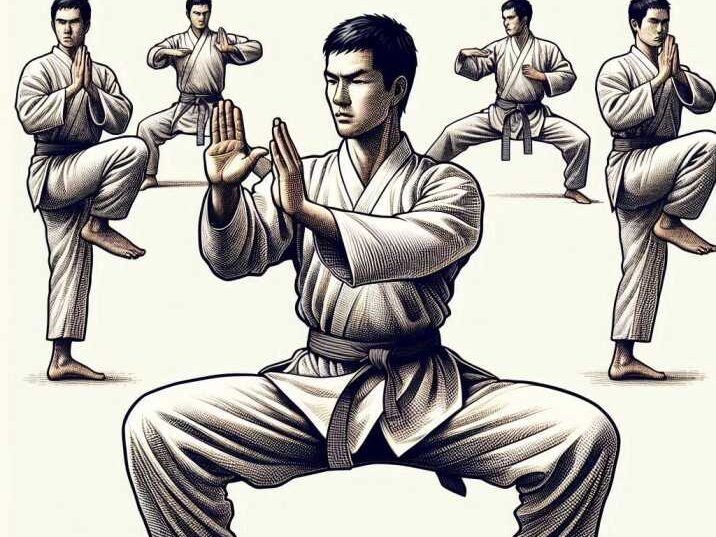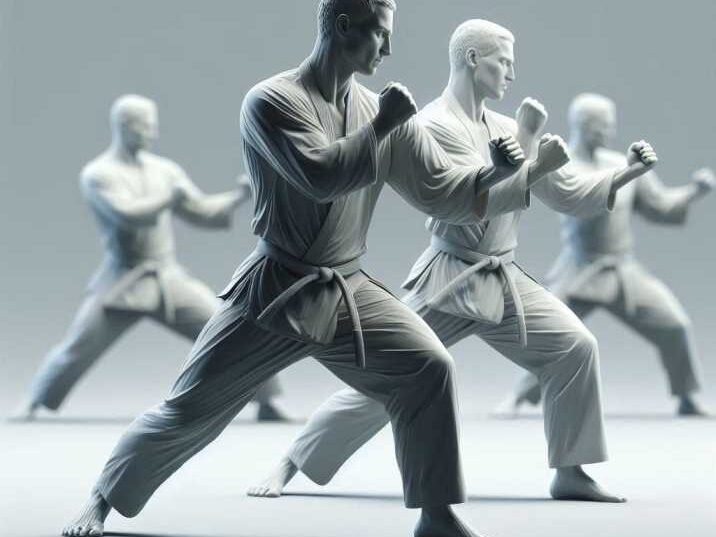Introduction
Table of Contents
Martial arts is a popular practice that teaches discipline, self-defense, and physical fitness. Martial arts poses are specific stances or positions that are fundamental to various martial arts styles. These poses are not only essential for performing techniques correctly but also help in building strength, balance, and focus. For artists, animators, and enthusiasts who want to depict martial arts accurately, understanding these poses is crucial. This article will explore what martial arts poses references are, why they are important, and how they can be used effectively.

What are Martial Arts Poses?
Understanding Martial Arts Poses
Martial arts poses are specific body positions used in different styles of martial arts. These poses serve as the foundation for movements, strikes, blocks, and defensive techniques. Whether you’re practicing Karate, Taekwondo, Kung Fu, or Jiu-Jitsu, mastering these poses is key to becoming proficient in the art.
Common Martial Arts Poses
Horse Stance (Ma Bu)
The Horse Stance is foundational in many martial arts, especially in Kung Fu. It involves standing with your feet wider than shoulder-width apart and bending your knees deeply as if sitting on an invisible horse. This stance is crucial for developing leg strength, stability, and endurance. Holding the Horse Stance for extended periods also improves focus and discipline, making it an essential exercise for martial artists of all levels.
Front Stance (Zenkutsu-dachi)
The Front Stance is a powerful and stable position commonly used in Karate. In this stance, one leg is placed forward with the knee bent at a 90-degree angle, while the other leg is extended straight behind you. The Front Stance is essential for delivering strong strikes and maintaining balance during offensive and defensive maneuvers. It also helps in generating force and grounding your body during combat.
Cat Stance (Neko Ashi Dachi)
The Cat Stance is a lightweight and agile position often seen in martial arts like Karate and Kung Fu. In this stance, you stand on one leg with the other foot lightly touching the ground, ready to move quickly. The Cat Stance allows for rapid shifts in direction and helps in maintaining balance while preparing for fast attacks or evasive maneuvers. It’s a stance that emphasizes mobility and quick reflexes.
Crane Stance
The Crane Stance is an iconic pose in martial arts, particularly in Kung Fu. It involves standing on one leg while lifting the other leg with the knee bent, mimicking the posture of a crane. This stance is primarily used to improve balance and concentration, making it an effective training tool for martial artists. The Crane Stance also prepares practitioners for delivering kicks or evading attacks while maintaining stability.
Guard Stance
The Guard Stance is a vital defensive position in striking arts like Boxing, Muay Thai, and MMA. In this stance, both arms are raised to protect the face and torso, with the body slightly angled to minimize exposure to strikes. The Guard Stance is crucial for blocking and parrying incoming attacks while staying ready to counter with your own strikes. It forms the basis of an effective defense strategy in many combat sports.
Why are Martial Arts Poses Important?
Building Physical Strength
Martial arts poses help in developing muscle strength, particularly in the legs, core, and arms. Holding stances like the Horse Stance for extended periods builds endurance and power.
Improving Balance and Coordination
Poses such as the Crane Stance require excellent balance and coordination. Practicing these poses enhances your ability to control your body’s movements.
Enhancing Mental Focus
Maintaining correct martial arts poses demands concentration. This focus on precise body alignment also translates to improved mental discipline, which is vital in martial arts training.
Foundation for Techniques
Mastering martial arts poses is essential for performing techniques correctly. Whether it’s a punch, kick, or block, the effectiveness of these techniques largely depends on the stance from which they are executed.
What is a Martial Arts Poses Reference?
Definition of a Martial Arts Poses Reference
A Martial Arts Poses Reference is a collection of images, videos, or illustrations that depict various martial arts stances. These references are used by artists, animators, martial artists, and enthusiasts to accurately portray martial arts movements and positions.
Uses of Martial Arts Poses References
- For Artists and Illustrators: Martial arts poses references are invaluable for creating realistic drawings or animations of martial artists. They help in capturing the dynamic nature of martial arts.
- For Martial Artists: References can be used to study and refine stances, ensuring that techniques are executed with precision.
- For Educators and Coaches: These references are helpful in teaching students the correct forms and techniques.
Types of Martial Arts Poses References
- Photographic References: High-quality photos of martial artists in various stances are the most straightforward type of reference.
- 3D Models: Digital 3D models can be rotated and viewed from different angles, providing a more comprehensive understanding of the pose.
- Video Tutorials: Videos showing the transition between different stances offer a dynamic reference for understanding how poses flow into one another.

How to Use Martial Arts Poses References Effectively
Choosing the Right Reference
When selecting a martial arts pose reference, it’s important to choose one that accurately represents the style you are interested in. For example, a Karate stance reference will differ from a Taekwondo stance reference.
Analyzing the Pose
Study the pose carefully. Pay attention to the alignment of the body, the position of the feet, the angle of the limbs, and the distribution of weight. These details are crucial for both artistic and practical applications.
Practice with the Reference
For martial artists, practicing with a reference can help in perfecting stances. Mirror the pose shown in the reference and hold it to build strength and familiarity.
Applying References in Art
Artists should use references as a guide rather than a strict template. Understanding the underlying anatomy and movement will allow for more dynamic and lifelike depictions.
Table of Information: Martial Arts Poses
| Martial Art Style | Common Pose | Purpose | Key Features |
|---|---|---|---|
| Karate | Front Stance | Stability and power | One leg forward, knee bent |
| Taekwondo | Back Stance | Defense and agility | Weight on back leg, body sideways |
| Kung Fu | Horse Stance | Leg strength | Feet wide, knees bent |
| Muay Thai | Guard Stance | Defense | Arms raised, feet balanced |
| Jiu-Jitsu | Base Position | Control and mobility | Low center of gravity |
Conclusion
Understanding and using martial arts poses references is essential for both martial artists and artists who want to depict martial arts accurately. These references provide a valuable resource for learning, teaching, and creating realistic representations of martial arts techniques. By studying and practicing these poses, you can enhance your skills, whether you’re on the mat or at the drawing board.
FAQs About Martial Arts Poses References
- What is a martial arts pose?
- A martial arts pose is a specific stance used in various martial arts styles for performing techniques.
- Why are martial arts poses important?
- Martial arts poses build strength, balance, focus, and serve as the foundation for techniques.
- How can artists use martial arts poses references?
- Artists can use references to create realistic and dynamic depictions of martial artists in action.
- What types of martial arts poses references are available?
- References include photographs, 3D models, and video tutorials that show different martial arts stances.
- Can beginners use martial arts poses references?
- Yes, beginners can use references to learn and practice correct stances in martial arts.


